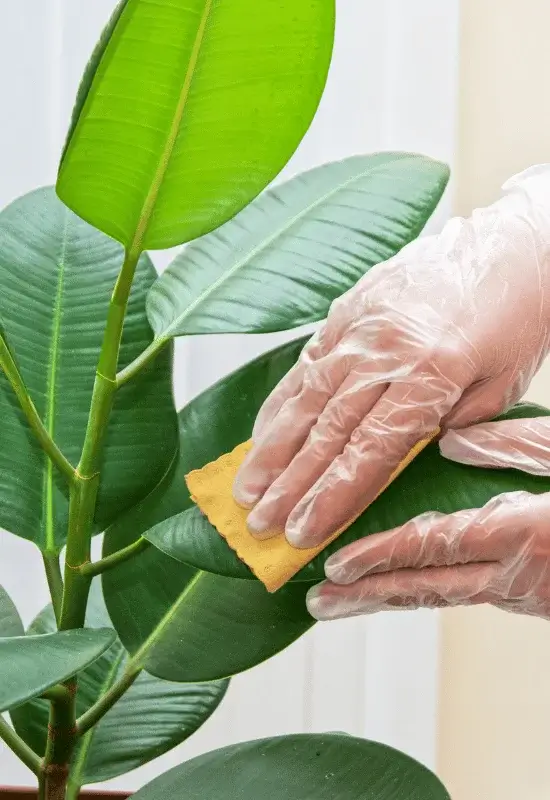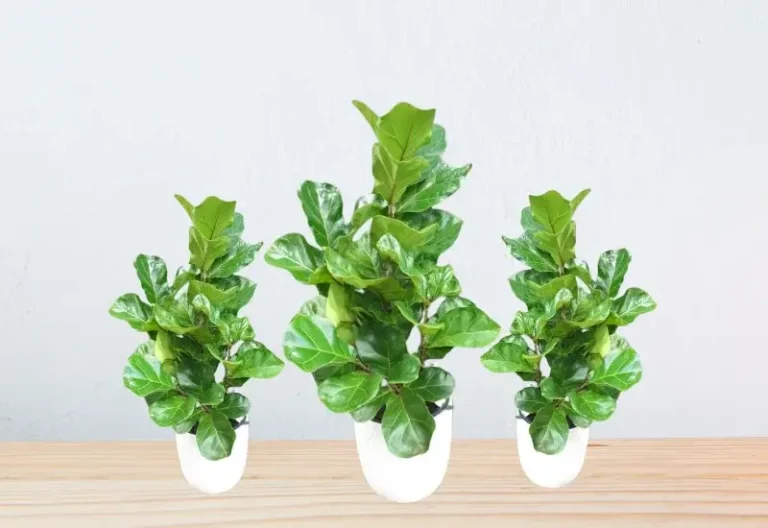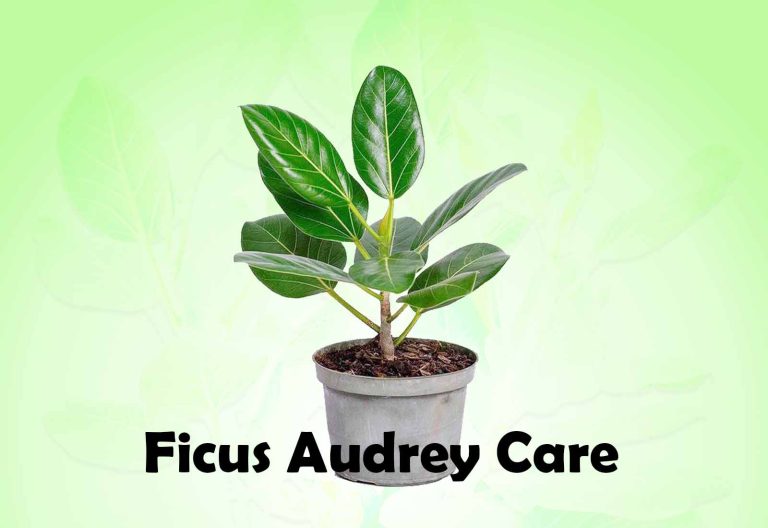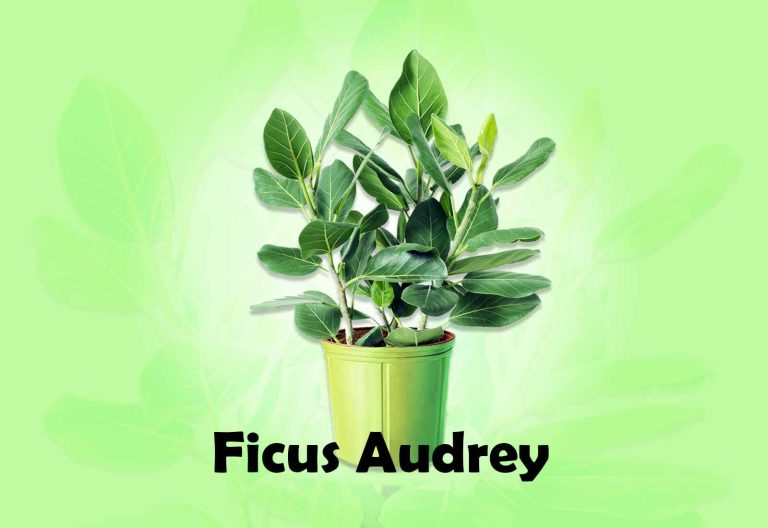15 Important Reasons of Ficus Audrey Leaves Curling
Are you worried about Why Ficus Audrey Leaves Curling? Ficus Audrey, with its fiddle-shaped leaves and graceful appearance, is a beloved houseplant for many. Concerns arise among plant enthusiasts when its leaves start to curl. Leaf curling can be a sign that something isn’t quite right with your Ficus Audrey, and understanding the underlying causes is crucial to ensure its well-being.
Importance of Ficus Audrey’s health

The health of your Ficus Audrey is not only a matter of aesthetic concern but also vital for the overall well-being of the plant. Healthy leaves are essential for photosynthesis, the process through which plants convert light into energy. When leaves curl or exhibit other signs of distress, it can affect the plant’s ability to thrive and grow.
Environmental Factors of Ficus Audrey
| Environmental Factors | Solutions |
| Light Conditions | Provide adequate, indirect light. Avoid harsh direct sunlight. |
| Temperature Fluctuations | Maintain a stable temperature range (60-75°F or 15-24°C). |
| Humidity Levels | Keep humidity within the plant’s preferred range, misting leaves if needed. |
15 Common Causes of Leaf Curling in Ficus Audrey
Here are 15 reasons why Ficus Audrey leaves might be curling:
- Underwatering: Insufficient water can cause leaves to curl as the plant tries to conserve moisture.
- Overwatering: Excessive water can lead to root rot, causing leaves to curl and yellow.
- Low humidity: Ficus Audrey prefers higher humidity; dry air can cause leaf curling.
- Temperature stress: Exposure to cold drafts or extreme heat can result in curled leaves.
- Inadequate light: Too little light can cause leaves to curl in an attempt to capture more sunlight.
- Excessive direct sunlight: Harsh, direct sun can scorch leaves, causing them to curl and brown.
- Nutrient deficiency: Lack of essential nutrients, particularly nitrogen, can lead to leaf curling.
- Pest infestation: Insects like spider mites or thrips can cause leaves to curl as they feed.
- Fungal diseases: Certain fungal infections can result in leaf curling and discoloration.
- Root-bound condition: When the plant outgrows its pot, restricted roots can cause leaf curling.
- Transplant shock: Recent repotting can stress the plant, leading to temporary leaf curling.
- Chemical exposure: Exposure to household chemicals or pesticides can damage leaves, causing curling.
- Soil pH imbalance: Improper soil pH can affect nutrient uptake, resulting in leaf curling.
- Edema: Overwatering combined with poor air circulation can cause cells to burst, leading to curled leaves.
- Genetic factors: Some leaf curling may be a natural plant growth pattern variation.
Impact on FIcus Audrey Leaves curling

How these environmental factors affect leaf curling is essential. Inadequate lighting conditions, temperature fluctuations, and humidity levels that fall out of the plant’s preferred range can all contribute to the curling of Ficus Audrey leaves.
Overwatering and underwatering effects
Proper watering is fundamental to the health of your Ficus Audrey. Overwatering can lead to root rot and stressed leaves, while underwatering can cause leaves to curl as the plant conserves moisture. The effects of both extremes are crucial for maintaining leaf health.
Water quality considerations
The water quality you use can also impact your Ficus Audrey’s leaves. Issues like hard water with high mineral content or chlorine can affect leaf health. Recognizing the importance of water quality and how it relates to Ficus audrey leaves curling is essential for your plant’s overall well-being.
Pests and Diseases
| Pests and Diseases | Impact |
| Aphids and Mites (Pests) | – Aphids and mites are tiny pests that feed on plant sap, which can lead to leaf damage and deformation. They weaken the plant and, in severe infestations, can cause significant leaf curling and distortion. |
| Fungal Infections | – Fungal infections, such as powdery mildew or leaf spot, can affect the health of Ficus Audrey leaves. These infections often manifest as white or brown spots on the leaves and can lead to leaf curling and discoloration. Proper treatment and preventive measures are essential to combat fungal issues and maintain leaf health. |
Potting and Soil Concerns
Rootbound issues
The potting and the condition of the soil can have a significant impact on your Ficus Audrey’s leaf health. When the plant becomes rootbound, meaning its roots have outgrown the pot and have little room to grow, it can exhibit signs of stress, including leaf curling. Recognizing the signs of a rootbound plant is crucial for addressing this issue.
Soil quality’s role in leaf curling
The soil quality in which your Ficus Audrey is planted is vital to its overall health. Soil that doesn’t provide adequate drainage or lacks essential nutrients can lead to leaf problems, including curling. Understanding how soil quality influences leaf health is vital to maintaining a thriving plant.
Issues and Solutions for Ficus Audrey Leaves Curling
Issues and Solutions
| Environmental Factors | |
| Issue | Solution |
| Inadequate lighting conditions | Move the plant to an area with better lighting. |
| Temperature fluctuations | Maintain a stable temperature range (60-75°F or 15-24°C). |
| Humidity levels | Ensure humidity is within the preferred range; mist leaves. |
| Watering and Moisture | |
| Issue | Solution |
| Overwatering | Adjust watering frequency and allow soil to dry slightly. |
| Underwatering | Water the plant thoroughly when the top inch of soil is dry. |
| Water quality | Use filtered or dechlorinated water. |
| Pests and Diseases | |
| Issue | Solution |
| Aphids, mites | Treat with neem oil or insecticidal soap. |
| Fungal infections | Isolate the plant, prune affected areas, treat with fungicide. |
| Potting and Soil Concerns | |
| Issue | Solution |
| Rootbound issues | Repot the plant in a larger container with fresh soil. |
| Soil quality | Use well-draining potting mix with necessary nutrients. |
These solutions can help you address the specific causes of leaf curling in your Ficus Audrey, promoting its overall health and well-being.
Prevention for Ficus Audrey Leaves Curling
Tips for preventing leaf curling
Preventing Ficus Audrey leaves curling involves proactive care and attention to its needs:
Optimal Environmental Conditions: Maintain consistent lighting, temperature, and humidity levels within the plant’s preferred range.
Proper Watering: Water your plant appropriately, allowing the top inch of soil to dry before watering again. Use filtered or dechlorinated water.
Pest Vigilance: Regularly inspect your plant for pests like aphids and mites. Isolate infected plants promptly and treat them as needed.
Soil Quality: Use a well-draining potting mix with essential nutrients. Re-pot your Ficus Audrey when it becomes rootbound.
Regular plant care
Consistent and attentive care prevents leaf curling and ensures your Ficus Audrey’s overall well-being. This includes:
Regular Inspections: Routinely check your plant for signs of stress, pests, or diseases.
Watering Routine: Establish a watering schedule that suits your plant’s specific needs and adhere to it consistently.
Pruning and Maintenance: Trim any damaged or diseased leaves and shape your plant to encourage healthy growth.
Soil Maintenance: Monitor soil quality and re-pot when necessary to prevent rootbound issues.
Final Words
By identifying and rectifying the underlying causes, including environmental factors, watering and moisture management, pest and disease control, and soil quality, you can help your plant regain its leaf health and vitality. Moreover, implementing preventive measures, such as consistent care, regular inspections, and adherence to optimal conditions, is crucial for averting ficus audrey leaves curling issues in the first place. Responsible plant ownership and proactive care ensure a thriving and visually stunning Ficus Audrey in your indoor space.






